- Category
- Life in Ukraine
How Ukraine’s LGBTQI+ Community Protects the Country With Arms in Hand and Drives It Toward Freedom
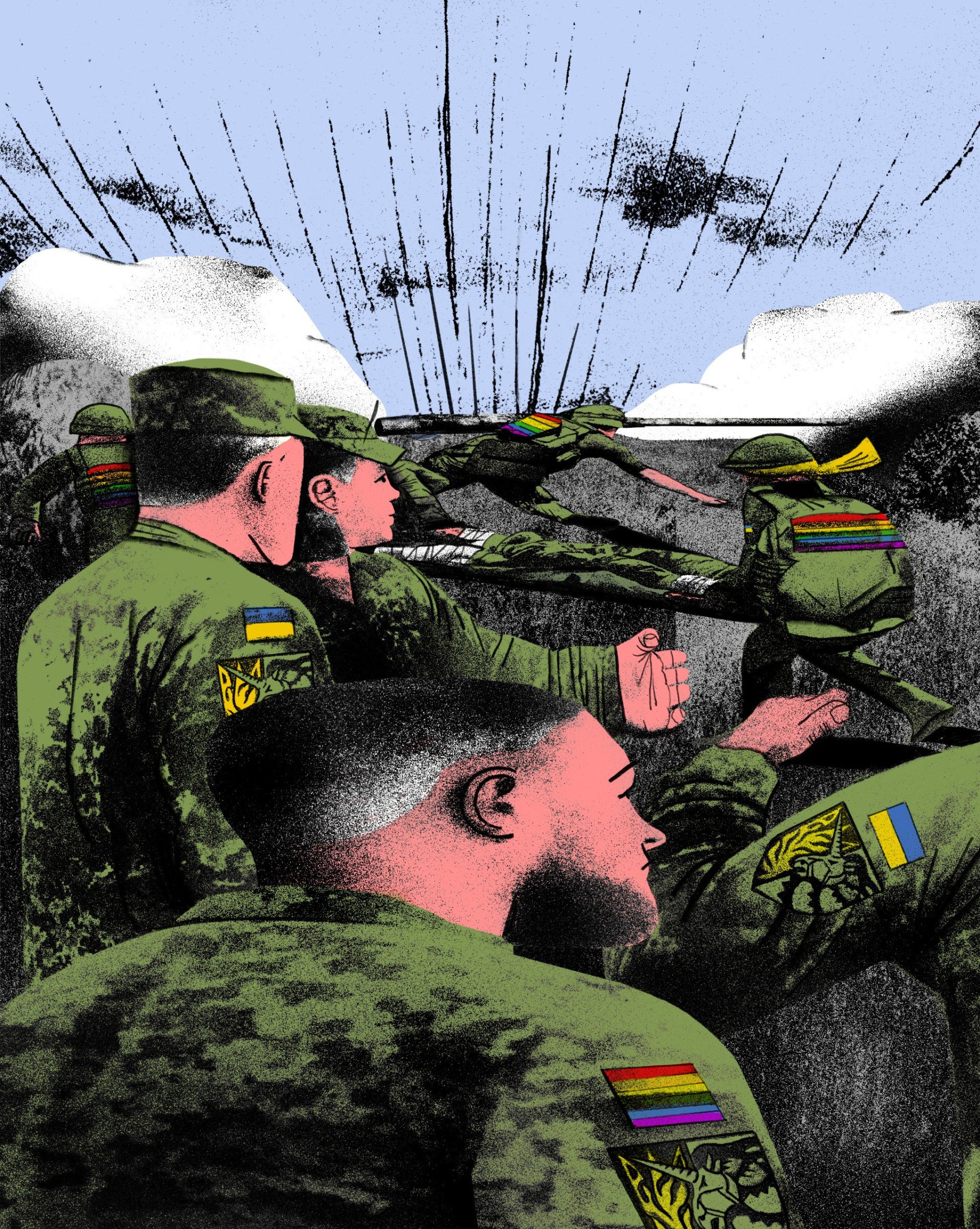
This is not the first year that Ukraine has celebrated Pride Month and its LGBTQI+ community—alongside the rest of the world. Over the years, while Russia was making significant steps in the direction of discrimination and hatred, the LGBTQI+ community in Ukraine was driving the country toward freedom and equality.
Today, many of those who were once at the forefront of this effort are now fighting for Ukraine—with arms in hand. Russia’s war of aggression has changed the perspective on the queer community in unexpected ways. It hasn’t been an easy road for those who stood up for the rights of LGBTQI+ people in Ukraine—historically and in modern times—but now, in the circumstances that Ukraine’s evil neighbor has put it in, the hope that things might progress faster reverberates throughout the community.
LGBTQI+ soldiers in the Ukrainian military
If before Russia’s full-scale invasion, Ukraine was moving towards improving conditions for its LGBTI+ community slowly, things have drastically changed since. As the war continues, Ukrainian LGBTQI+ people—especially queer soldiers fighting for their nation—are experiencing a surge in public support.
According to a recent survey, 65.7% of respondents in Ukraine feel positively about LGBTQI+ people taking part in the resistance to the Russian invasion. That’s almost not surprising: thousands of openly gay people have shown unprecedented bravery in defending Ukraine from Russia’s aggression.
Queer artists, musicians, activists, military personnel, and just regular civilians rose in arms to defend their nation and continue to do so every day while managing to contribute to improving the situation for LGBTI people in Ukraine by openly being who they are.
In May 2023, talks of progress became a reality with the drafting of a new bill in support of civil partnerships. This was an alternative solution for Ukrainian couples who—for whatever reason—can not get married and therefore face challenges in their abilities to jointly take out health insurance, handle inheritance, ask for sick leave due to a partner’s illness, and maintain and care for a disabled partner.
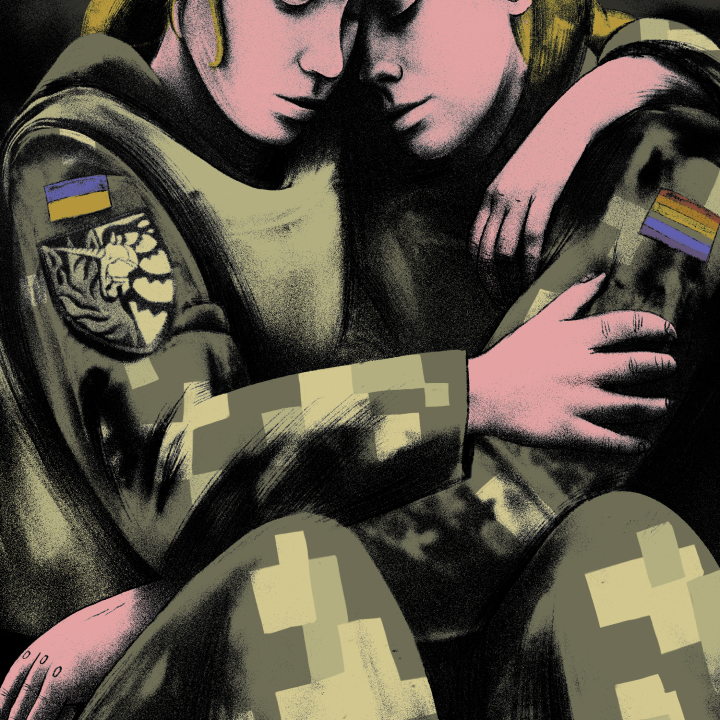
This is exactly what LGBTQI+ couples cannot do due to same-sex marriages not being legalized in Ukraine. The bill is currently in the works and is a huge step in developing a legal framework that supports LGBTQI+ people during the war.
However, registered partnerships alone are insufficient. Ukrainian activist and KharkivPride co-organizer Yakiv Lavrynets, who we interviewed, believes that “Our ultimate goal is full marriage equality. It is unquestionably worth supporting and developing LGBTQ+ military unions. Both the state and society should do this: rehabilitation, employment, and ensuring basic rights for military personnel and veterans—all of this should be done today. Unfortunately, without the involvement of the state and society, it will be a difficult and thorny path for LGBTQ+ activists and organizations.”
As well as proper visibility of queer people on the frontlines, the amount of homophobia in Ukrainian society has also decreased. Some believe this is because people have started to associate hate in any form—queerphobia, racism, xenophobia—with Russia. The Russian “anti-LGBT law,” signed in June 2013, strongly represents the homophobic rhetoric of Russian society and the Russian military.
Earlier last year, we interviewed one of the first openly gay Ukrainian soldiers—a veteran of the Russo-Ukrainian war, combat medic, and head of the NGO "Ukrainian LGBTIQ+ Military for Equal Rights''—Viktor Pylypenko. When answering the question of how the Russian media react to LGBTQI+ people in the Ukrainian army, he told us: “Russians are always slurring us. They hate us. They hate our existence. The main point of Russian propaganda in Europe and other countries is that the Ukrainian military is neo-nazi and against human rights, but we show a different picture. We showed openly gay and lesbian and trans people in the Ukrainian military.”
Queer people are dying on the frontline every day. On June 7, Artur Snitkus, an artist, performer, and musician, was killed in action at the age of 36 while performing a combat mission in the Donetsk region. Artur served in the army before the full-scale invasion began.
A member of Kyiv's art collective "Dzherelo," Artur was creating electronic music; his track featured on the SESTRO compilation, released by Odesa's "система | system" label, donates all proceeds to Kharkiv's "Sphere" organization, actively supporting women and LGBTQ+ people in Eastern Ukraine.
His story is one of many; Ukraine is mourning the losses of the best people in the nation, while Russia is too bigoted to even acknowledge the presence of queerness among its own people.
Queer representation in Ukrainian history
It is extremely hard—if not at all impossible—to trace openly gay people in Ukrainian history. The Orthodox Church has considered homosexuality a sin, and Ukraine has been at the crossroads of many empires throughout its history, which left us with not much direct evidence of LGBTI individuals in Ukraine’s historical past.
As Ukrainian artist, photographer, curator, and writer Anton Shebetko points out in his book "A Very Brief and Subjective Queer History of Ukraine," that even though there are no proven non-heteronormative cultural figures in Ukrainian documented history, research based on works and correspondence of different figures shows that there has always been an almost obvious queer presence in Ukraine’s history.
For example, the most commonly known case is the correspondence between two iconic Ukrainian female writers, Lesya Ukrainka and Olha Kobylianska. The writers became close friends in 1899 and remained so until Ukrainka died in 1913. Whether the letters and, therefore, the relationship between the two was platonic or romantic has sparked debate among literary scholars for decades. Though there is no distinct proof of their romance, it is impossible not to assume that the gentleness and vulnerability the two women displayed to each other was strictly platonic. Thus Ukrainka and Kobylianska became symbols of female queerness in Ukraine.
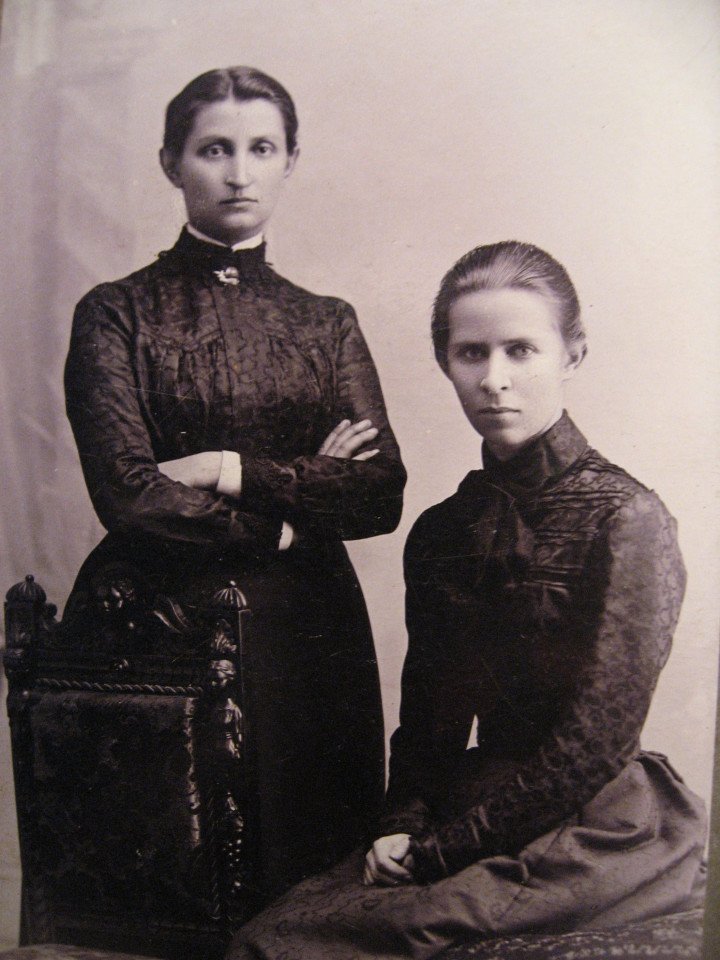
Another more ancient and interesting case is the story of Saint Dositheos, the Hermit of Kyiv. Dositheos, born Daria Tiapkina, was born in 1721 and escaped her family at the age of 15, dressing in man’s clothes and calling herself Dositheos. Dositheos lived their life and died as a male presenting monk in Kyiv Pechersk Lavra and was canonized as a saint. Yet again, it is quite difficult to pinpoint the definitive fact if Dositheos is actually the first documented transgender person in Ukrainian history, but it is also difficult to argue against it.
Everyone knows that queerness has existed among cultures and nations all over the world since the beginning of age, so it would be shortsighted to assume Ukraine never had any queer historical figures. While the aforementioned stories are not proven to be 100% LGBTI, there’s a piece of classical Ukrainian literature that’s definitely a pioneer in openly exploring non-heteronormative sexual orientation.
“Andrii Lahovskyi” is a novel written in 1905 by eminent Ukrainian orientalist, belletrist, linguist, literary scholar, folklorist, and translator Ahatanhel Krymskyi. The modernist novel follows the life path of a young Ukrainian man who is searching for his place in life and examines different levels of his identity—including his queer sexual identity. The book was groundbreaking for many reasons, from its stylistic point of view to the themes it investigated, and deserves way more recognition as early queer literature. Fun fact: Krymskyi was good friends with the above-mentioned Lesya Ukrainka, who wrote an analysis of his novel. Tragically, the author was one of many Ukrainian figures repressed in the USSR, and the Stalinist terror led to his death from torture in jail in 1942.
Soviet censorship
Negative attitudes towards lesbian, gay, bisexual, transgender, and intersex people are remnants of a homophobic mentality that was instilled in Ukraine under the Soviet Union. The Soviet Union was well-known for its cruel and pervasive censorship of many themes based on “official ideology.” Homosexuality was prohibited by the Criminal Code in the USSR under Article 121—consensual sexual relations between men and “sodomy” were punishable by up to five years in prison.
Western observers believe that during the Soviet era, between 800 and 1,000 men were imprisoned each year. Among those detained was world-famous Ukrainian-Armenian director Serhii Paradzhanov.
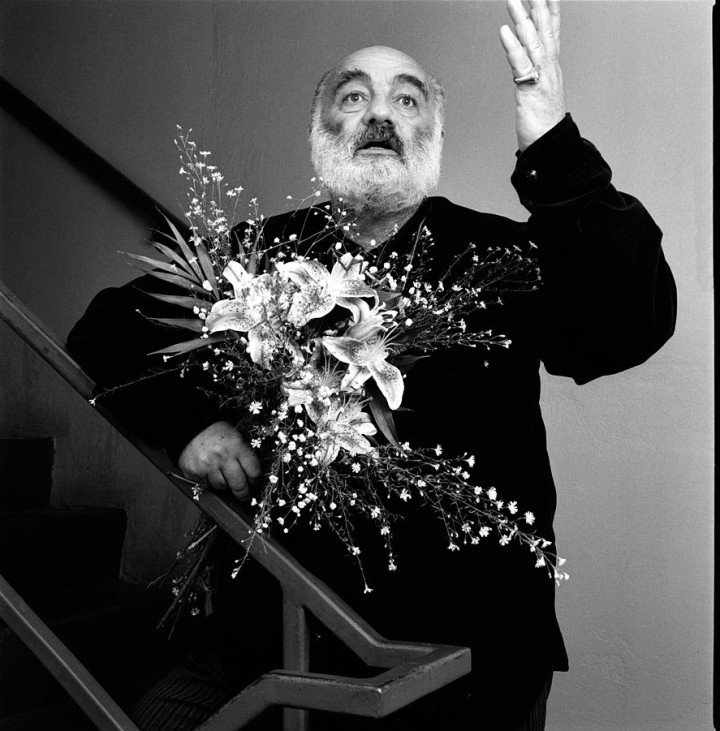
This figure does not include individuals repressed and tortured for anything that could be deemed as "anti-Soviet nationalist activity," which was a common practice (hence the death of Ahatanhel Krymskyi.)
Some historians argue that under Stalin, Soviet propaganda began linking homosexuality with fascism; they suggest that Article 121 may have served as a convenient political weapon against dissidents, regardless of their actual sexual orientation. Before that, in the 1920s, homosexuality in the USSR was classified as a mental illness, often linked to schizophrenia and pedophilia. The People's Commissariat for Health entitled The Sexual Life of Contemporary Youth, authored by Izrail Gel'man, stated in 1923: “Science has now established, with a precision that excludes all doubt, that homosexuality is not ill will or crime but sickness. The world of a female or male homosexual is perverted; it is alien to the normal sexual attraction that exists in a normal person.”
The stigma surrounding LGBTQIA+ people in Ukraine, as well as other post-Soviet countries, still lingers due to the history of brainwashing and censorship that Russia has “gifted” Ukraine.
Modern days
Constant efforts of the Russian Federation to keep Ukraine further away from values of freedom and equality didn’t stop Ukraine from becoming the first country of the former Soviet Union to decriminalize homosexuality in 1991—when it gained independence.
Ever since, Ukraine has made significant progress in establishing a legal framework to protect the LGBTI community in the country. That’s not surprising—despite Russia’s endeavors, Ukraine always aimed and was closer in values to the rest of the world.
Ukraine’s first Pride March, commonly referred to as the March for Equality, was held in the capital, Kyiv, in 2013 and paved the way for other major cities such as Kharkiv, Odesa, Kryvyi Rih, Zaporizhia and Kherson.
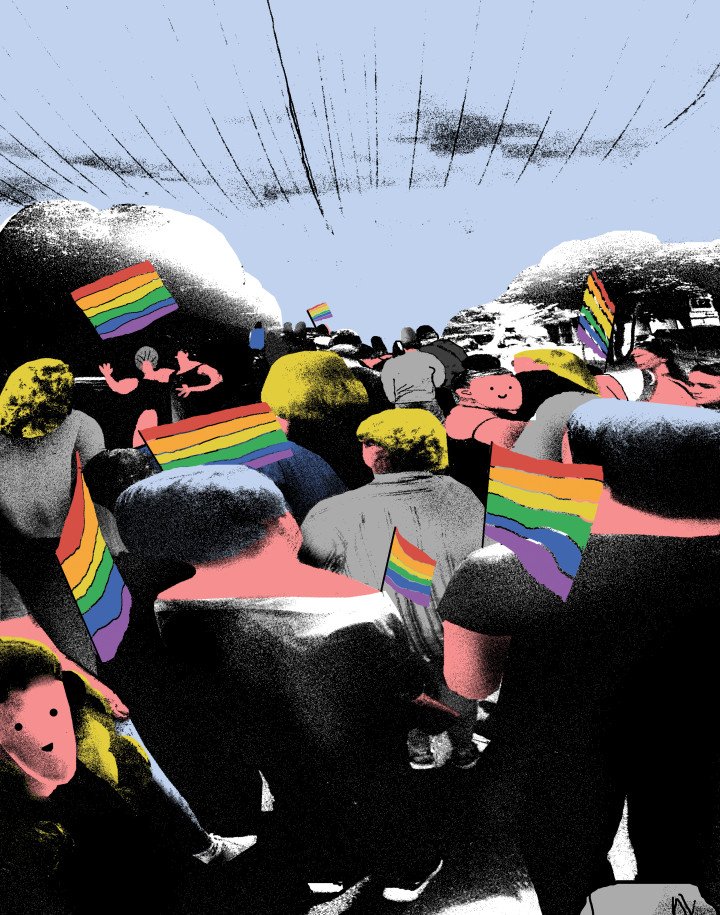
And if the first Pride March gathered around 100 people, the latest March that took place just before Russia’s full-scale invasion in 2022 collected almost 8 thousand participants. Every year, the parade has developed more and more in terms of safety and support from the government—-over 40 civic and charity organizations that are registered in the country have made an effort to make the gathering more secure and expand the parade to more cultural events like public talks, festivals, and other events.
A little-known fact: while Kyiv’s first Pride had 13 people arrested for attempts to disrupt the rally, neighboring Russia had 20 gay activists arrested in Moscow on the same day.
Major events in the history of independent Ukraine regarding the LGBTI community include the passing of a law in 2015 banning discrimination in the workplace, including that which is based on sexual orientation. That was an important step for further detachment from Russia and a move closer to the EU.
Today’s Kyiv is almost unimaginable without the LGBTI contribution, and not only during the Pride month. The cultural scene is heavily influenced by the queer community, from art exhibitions to music and clubs to cinema. This year, Ukraine’s first LGBTI film festival, “Sunny Bunny,” was held in the capital, representing both Ukrainian and international queer filmmakers; even a couple of years ago, such an event seemed impossible.
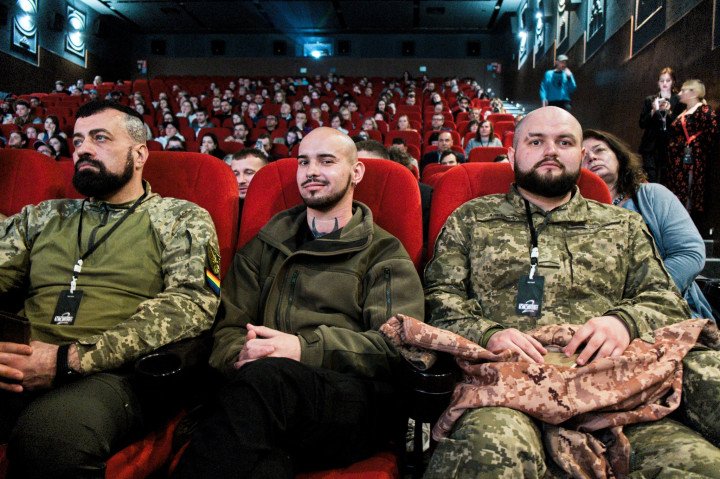
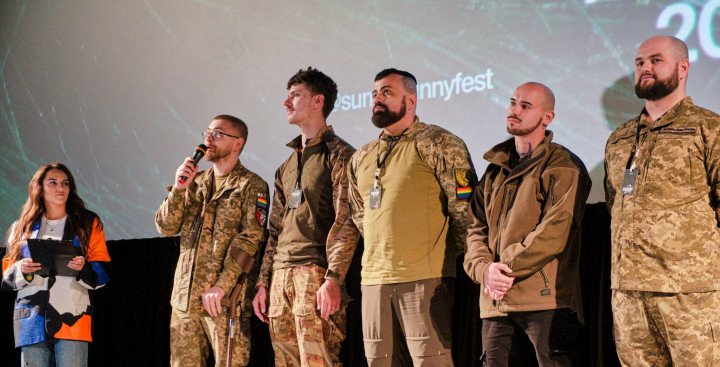
Yakiv Lavrynets, who started his path in LGBTQ+ activism in 2016, told us, "Back then [in 2016.], the LGBTQ+ community almost feared walking the streets, especially during Pride Month. We could only dream of support from influencers, TV channels, or businesses. Today, we are witnessing a remarkable transformation. Military personnel, politicians, government officials, diplomats, businesses, and influencers openly support the LGBTQ+ community. Society has clearly become more acceptable, and it is a direct result of the tireless efforts of LGBTQ+ activists and organizations, along with Pride events."
According to Lavrynets, the next necessary step towards a more acceptable society would be for the state to take responsibility for legally unprotected citizens. “Civil society's efforts alone are not enough; the state must also meet the community and civil organizations halfway. Everything should work in a unified, harmonious mechanism. It is equally important for the state to support the Pride movement and for the police not only to protect marches and pride events but also to preventively isolate homophobic extremists and attackers.”
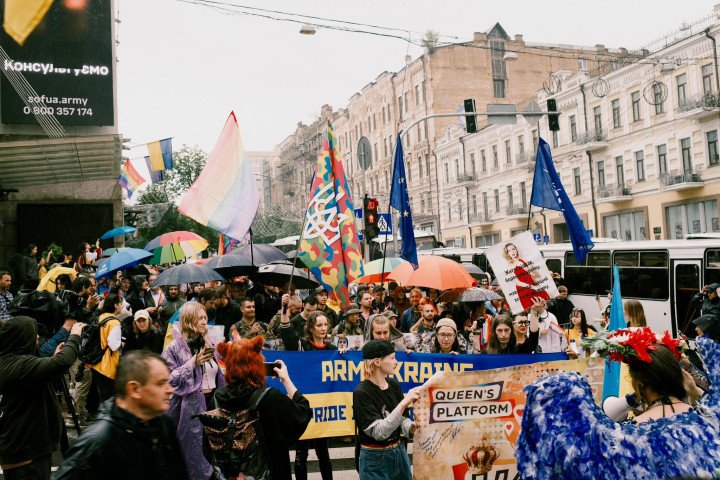
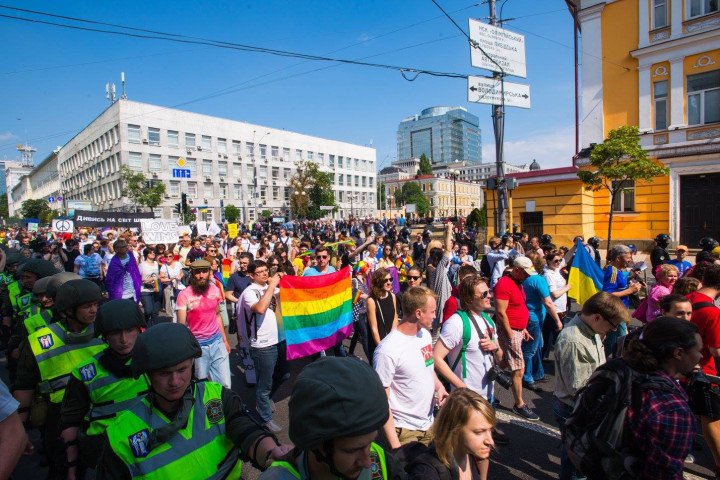
“Against all hope, I hope,” Lesya Ukrainka
As Ukraine fights for its survival, for many, it has become clearer than ever that everyone has the right to live in dignity and freedom. As Ukraine remembers many of its queer figures from over the years, including those who have given their lives for being who they are—and many today for Ukraine—hope remains a guiding principle for the LGBTQI+ community. Because Ukraine simply cannot afford to lose hope for a freer and more equal future.
Cover illustration by Jenya Polosina


-29a1a43aba23f9bb779a1ac8b98d2121.jpeg)

-f88628fa403b11af0b72ec7b062ce954.jpeg)
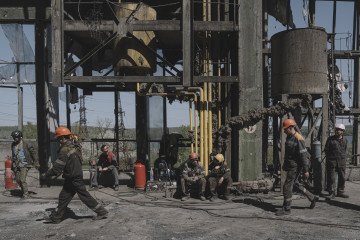
-24deccd511006ba79cfc4d798c6c2ef5.jpeg)

-73e9c0fd8873a094288a7552f3ac2ab4.jpg)